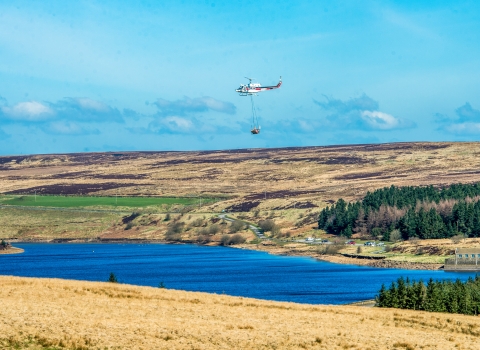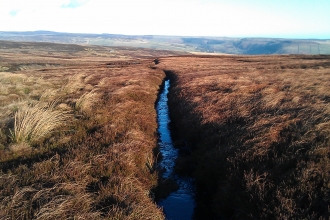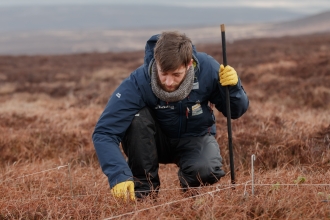What does our work involve?
Restoring degraded peatlands is hard work. Due to restrictions on accessing the land we restore (90% is privately owned), we have to work throughout the autumn and winter. In the wild landscapes of the peatlands, weather conditions can be extremely harsh with snow, ice and freezing winds to contend with.
Surveying the land
Before we begin work on restoring an area of peatland, we first need to understand exactly what the damage is and how the landscape works. This includes:
- where the water goes when it rains
- what plants and mosses are growing
- the depth and steepness of the gullies
We spend a lot of time surveying the land to obtain this information. With permission of the landowner, we go over the peatlands by foot and use drones to help us capture the data we need. Our GPS handheld mappers help us to record the information, and are tough enough to survive all weathers!
(c) Matthew Snelling
Restoration techniques
There are various ways in which we can help a degraded peatland to thrive again.
Blocking the drainage channels or 'grips'
By blocking these channels, we help to stop water flowing off the peatlands. This helps the land to become saturated again and provide an excellent habitat for sphagnum and other plants and wildlife.
We use a variety of materials to block the grips. We prefer to use peat or another material found naturally on peatlands, but sometimes the damage is so extensive that we need to use wood or stone.
Over 1,700 kilometres of grips and gullies have been blocked by Yorkshire Peat Partnership so far (more than distance from Skipton to St Tropez!).
(c) Ceri Katz
Reprofiling
This basically means making the sides of drainage channels or 'grips' less steep, which means that water will flow into them more slowly and slow the rate of erosion.
We use diggers to reprofile the land. They are specially designed so their weight is spread out and they don't damage the land they're driving over - they have less impact than a human foot!
Reprofiling a gully (https://vimeo.com/283716797)
Reprofiling eroding peat on a steep slope
Revegetation
We plant a range of sphagnum mosses on the bare peat so it is less vulnerable to erosion. The sphagnum will eventually form more peat, and helps to slow the flow of water running off the peatlands, as well as filtering our water.



